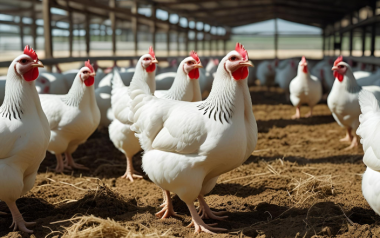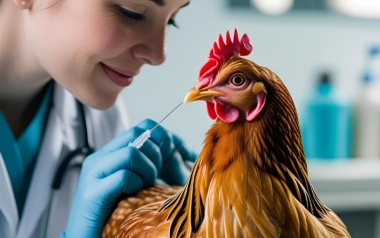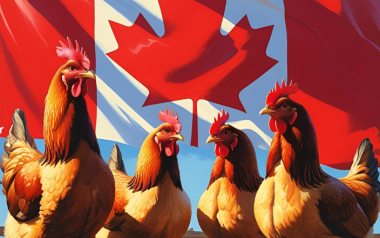Sources: Available upon request.
27 Jan 2024
Mycoplasma gallisepticum, an ever-present problem in poultry
Mycoplasma gallisepticum (MG) infection in commercial poultry is common in many parts of the world. However, through the application of good biosecurity measures and the effective use of vaccines, losses due to MG can be reduced.
Mycoplasma gallisepticum (MG) infection in commercial poultry is common in many parts of the world. Despite success in eliminating the disease in grandparent breeders of chickens and turkeys, the problem persists among broiler breeders and broilers themselves in many areas. And there also remains a high incidence of the disease among commercial layers worldwide.
Mycoplasma gallisepticum in the commercial poultry sector will continue and the main objective should be to limit the losses it can cause. MG infection is caused by a pathogen that resembles bacteria but has no cell wall, a characteristic that makes it extremely fragile. It is easily inactivated by disinfectants, heat, sunlight, and other factors, although it remains viable in the environment outside the bird for about 3 days. For this reason, MG is easy to eliminate in single-age poultry farms that practice “all in/all out”.
The infection is transmitted from farm to farm mainly by the movement of contaminated people, equipment, and vehicles, which is why basic biosecurity is the key to preventing the introduction of MG into laying and breeding complexes. Although vertical infection can occur (egg transmission from infected breeders to their chick progeny) at a low level, it is horizontal infection that occurs more readily (from shed to shed).
Another means of GM transmission that has not received much attention is spread by wild and pet birds. Data have shown that wild birds and pet birds can become infected and spread MG. For this reason, poultry houses should be wild bird-proofed and farm employees should be prohibited from contact with pet birds.
Some strains of MG are mild, while others are highly virulent. The type of shed is important in determining the severity of clinical disease, as open-sided sheds and enclosed sheds with excellent ventilation do not experience significant losses in performance, while enclosed sheds with poor ventilation do. Therefore, MG vaccination programs must consider the air quality where the hens are housed. Concurrent diseases such as coryza and infectious laryngotracheitis, as well as the intensity of the live virus vaccination program, especially against IBV, NDV, ILT, are also variables to be considered.
Vaccination against MG reduces the spread of the pathogen and its duration. Therefore, it is important to perform it as part of the efforts implemented in the eradication of MG in poultry farms to reduce the potential for spread to other neighboring farms or to non-infected birds.
In summary, it is unlikely that Mycoplasma gallisepticum infection can be eradicated from commercial poultry in the next few years. However, through the application of good biosecurity measures and the effective use of vaccines, losses due to MG can be reduced.









































